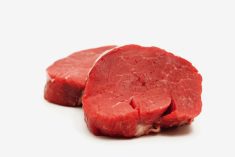The only Washington, D.C.-area team having a worse year than the Baltimore Orioles is big food’s biggest, richest lobbying arm, the Grocery Manufacturers Association, or the GMA.
Most American farmers and ranchers don’t know GMA by its acronym; they do, however, know its work: it was the organizer and chequebook behind the defeat of several state initiatives to label genetically modified food in the early 2010s.
GMA’s muscle and money, however, only bought time. In 2016, Congress passed a national biotech labelling law to pre-empt states from creating an unworkable quilt of state or regional food labelling laws.
Read Also

Lack of China trade deal threatens soybeans, canola market
American soybean growers – and by extension, Canadian canola growers — are, at some point, in for big disappointment on their grain market realities.
While it’s not completely clear how GMA’s opposition to the proposed law split the group’s paying membership, it is clear that the law’s passage opened the door for several high-profile GMA members to leave the then-US$35.6-million-a-year trade association. The first to go in 2017 were Campbell Soup, Mars, Dean Foods, and Nestle. Tyson Foods and Unilever soon followed.
That’s an enormous slice of brand power, dues, and political pie for any lobbying organization to lose in just months. Two Politico reporters, Helena Bottemiller Evich and Catherine Boudreau, investigated why last November. They discovered the nation’s most powerful food lobbyist chasing its members who were chasing a fast-changing marketplace.
“Companies are increasingly under pressure to find growth in a market in which more and more consumers are seeking healthier fare,” noted the pair, “whether they’re buying organic baby food, cereal without artificial colour or meat raised without antibiotics.”
While that growing trend may be evident, some more nuanced parts of it aren’t. “Many of the cutting-edge brands have become part of conglomerates,” setting up an in-house “culture clash” between the brand’s old persona and new. For example, “Kashi is owned by Kellogg’s,” explained the reporters, which presents “competing priorities and values.”
That means what worked five years ago for Kellogg’s — like the GMA’s expensive, public fight against biotech labelling — fly smack in the face of what Kellogg’s now attempts to do in marketing an upscale, “progressive” brand like Kashi which describes itself as a company “mindful of sustainable and ethical farming practices.”
Adding spice to the pot was GMA’s opposition to the Food and Drug Administration’s still-not-in-effect 2014 Nutrition Facts labelling rule. It will require companies to “list ‘added sugars’ for the first time” on their food labels. Interestingly, then-GMA member companies like Mars and Nestle — two of the world’s biggest sugar users — favoured the rules “because consumers want more information.”
Similarly, several members had an unconventional view on GMA’s opposition to the national biotech labelling law; they believed it gave “the impression that the industry was against transparency.”
It wasn’t so much an impression as a fact: GMA fought tooth and nail against the labelling effort and asked Big Agbiz to bring its muscle and money into the fight, too. In the end, the law passed (the Trump administration is delaying its implementation) and biotech food labelling will be the law of the land sooner than later.
In the meantime, GMA ex-members like Mars, Unilever, and Nestle have joined other companies like Danone to form a new food trade group that, Politico reported in early July, will be named “the Sustainable Food Policy Alliance.” The group’s “immediate plan (is) to focus on nutritional labelling and carbon emissions.”
Moreover — and here’s where farmers come in — the group will also “advocate… for environmental policies (to ensure) that the final version of the Farm Bill addresses water and soil quality and expanding renewable energy… (because) food companies ‘can and should be doing more to lead and drive policy action… ’”
Can and should or can and will?
Either way, key customers, those very same food companies, are being driven by their key customers, a younger, more affluent and urban generation, to deliver higher quality and more transparency. That means you’ll eventually do the same, too.
And if you think the marketplace can’t or won’t do it, go talk to the shrinking, sulking GMA.
The Farm and Food File is published weekly throughout the U.S. and Canada.















